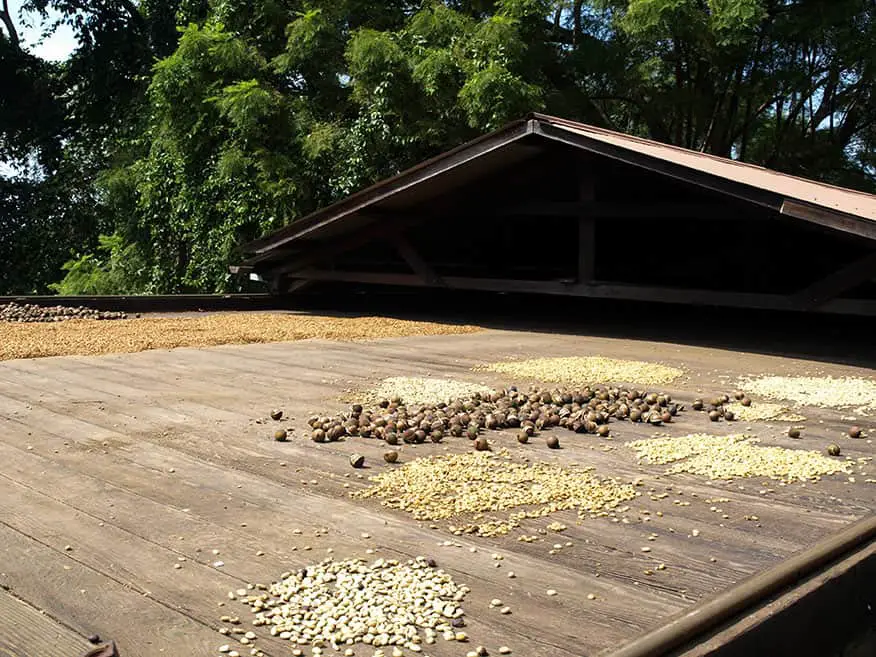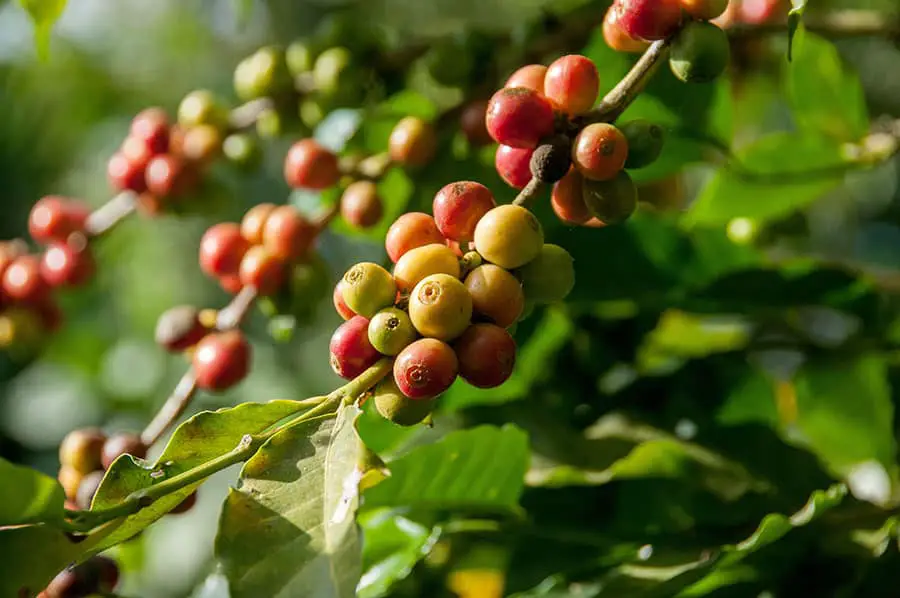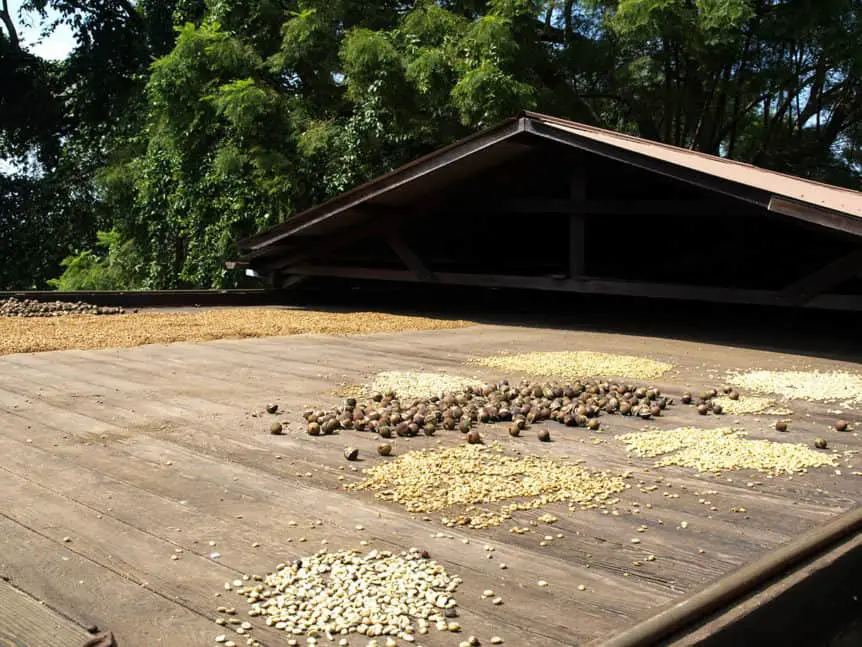
If you’ve ever heard whispers about Kona coffee and wondered what makes it so special, you’re in for a treat. This Hawaiian gem is more than just a cup of joe—it’s a story of perfect conditions, rich history, and unmatched quality. Grown exclusively in the Kona Coffee Belt on Hawaii’s Big Island, Kona coffee has earned its reputation as one of the world’s finest. Let’s look into what makes it unique, its journey from farm to cup, and how you can savor the real deal.
Why Kona Coffee Stands Out
Kona coffee’s magic begins with its home: the Kona Coffee Belt, a narrow 30-mile-long, 1-mile-wide strip along the slopes of the Hualalai and Mauna Loa volcanoes. The region’s high elevation, mineral-rich volcanic soil, and unique microclimate create a coffee-growing paradise. Sunny mornings give way to cloudy afternoons with light rain, providing natural irrigation that lets coffee cherries mature slowly and develop complex flavors. The result? A smooth, bright brew with notes of brown sugar, honey, milk chocolate, and subtle fruitiness, all with lower acidity than many other coffees.
Mark Twain, after visiting Hawaii in 1866, couldn’t help but rave: “Kona Coffee has a richer flavor than any other, be it grown where it may and call it by what name you please.” That sentiment still holds true today. The combination of ideal growing conditions and meticulous care ensures Kona coffee delivers a cup unlike any other.
A Brief History of Kona Coffee
Coffee wasn’t always a Hawaiian staple. It first arrived in 1828 when Reverend Samuel Ruggles planted coffee trees in the Kona District, bringing cuttings from Brazil. The region’s potential became clear later in the 19th century when English merchant Henry Nicholas Greenwell established Kona coffee as a global brand. By the late 1800s, over 3 million coffee trees dotted the Big Island, with Kona leading the charge.
Today, Kona coffee accounts for about 95% of the region’s coffee production, grown on roughly 800 family-owned farms averaging less than 5 acres each. These small-scale operations, totaling about 2,300 acres, maintain a tradition of craftsmanship that sets Kona apart. The Kona name is tightly protected—only coffee from this specific district can bear the label, ensuring authenticity and quality.
From Blossom to Brew: How Kona Coffee is Made
The journey of Kona coffee is a labor of love. It starts in February and March when coffee trees bloom with small, fragrant white flowers known as “Kona snow.” By April, green berries form, ripening into red cherries by August. Harvest season, running through December, is hands-on—every cherry is handpicked to ensure only the ripest fruit is selected. This labor-intensive process is one reason Kona coffee commands a premium price.
Once picked, time is critical. Within 24 hours, cherries are run through a pulper to separate the beans from the pulp. The beans then ferment overnight in tanks for 12 to 24 hours, depending on elevation, before being rinsed and spread on drying racks called hoshidanas. These traditional racks, often with rolling roofs to protect against rain, dry the beans for one to two weeks until they reach the optimal moisture level of 9-12%, as mandated by the Hawaii Department of Agriculture. Too much moisture risks harmful mycotoxins, so precision is key.
After drying, the beans, still encased in a parchment layer, are stored as “pergamino” until milling removes the parchment and prepares them for roasting. This careful process, from handpicking to drying, ensures Kona coffee meets the high standards that define its name.
Types of Kona Coffee Beans

Kona coffee beans are classified into two main types based on their seed structure, with further grading for quality:
| Bean Type | Description | Grades |
|---|---|---|
| Type I | Two beans per cherry, flat on one side, oval on the other. Highest quality. | Kona Extra Fancy, Kona Fancy, Kona Number 1, Kona Select, Kona Prime |
| Type II | One round bean per cherry, known as peaberry. Rare, bold flavor. | Peaberry Number 1, Peaberry Prime |
Type I beans are the gold standard, with grades like Kona Extra Fancy representing the largest, most moisture-rich, and defect-free beans. Type II peaberry beans, making up just 5% of the harvest, offer a bolder, smoother taste. Anything below these grades, like Type III, can’t be labeled as Kona and is sold as generic Hawaiian coffee.
Kona Blends vs. 100% Kona: Know the Difference
Price-conscious buyers might encounter Kona blends, which mix Kona beans with others, like Colombian or Brazilian, to cut costs. By Hawaiian law, blends labeled “Kona” must contain at least 10% Kona beans, but the rest can be from anywhere. Terms like “Kona Roast” or “Kona Style” are red flags—these often contain no Kona coffee at all. For the true Kona experience, always look for “100% Kona Coffee” on the label.
Past scandals, like the 1990s case where supplier Michael Norton sold cheap coffee as 100% Kona, led to stricter regulations. Thanks to scientist Joseph Rivera’s testing methods, every Kona bean exported from Hawaii is now verified by the State of Hawaii Department of Agriculture. This ensures you’re getting the real deal when you buy authentic Kona.
Why Kona Coffee Costs More (and Why It’s Worth It)
Kona coffee’s price tag often raises eyebrows, but there’s good reason for it. The handpicking process is labor-intensive, and with farm workers in Hawaii earning fair wages, labor costs are higher than in other coffee-growing regions. Add to that the limited growing area—just 2,300 acres—and you get a rare product with high demand. Pests like the coffee borer beetle and coffee leaf rust have also challenged production, potentially driving prices higher.
Yet, the cost reflects more than economics. Kona coffee is grown sustainably, with natural fertilizers made from compost, seaweed, and coffee husks. Donkeys, sheep, geese, and chickens roam farms, controlling weeds and pests while providing natural manure. These eco-friendly practices, combined with fair labor conditions, make Kona an ethical choice. Plus, you’re supporting family-owned farms that have perfected their craft for generations.
Tasting the Aloha: Kona Coffee’s Flavor Profile
So, what does Kona coffee taste like? It’s often described as smooth and balanced, with a clean finish. Expect a symphony of flavors: brown sugar, honey, milk chocolate, and bright, fruity notes like blackberry or citrus. Its low acidity makes it easy on the stomach, perfect for multiple cups. Each farm’s microclimate—elevation, soil, and slope—adds subtle variations, so exploring different brands is part of the fun.
How to Buy and Enjoy Authentic Kona Coffee
Ready to try Kona coffee? Here’s how to ensure you’re getting the real thing:
- Check the Label: Look for “100% Kona Coffee” to avoid blends. Reputable brands like Koa Coffee, Honolulu Coffee, or Greenwell Farms are great starting points.
- Buy Direct: Order from Hawaiian farms or trusted online retailers to guarantee freshness. Many farms offer subscriptions for regular deliveries.
- Visit the Source: If you’re in Hawaii, tour a Kona coffee farm like Rooster Farms or Kuaiwi Farm. Tastings and tours offer a deep dive into the process.
- Brew It Right: Use a French press or pour-over to highlight Kona’s nuanced flavors. Aim for a medium grind and water just below boiling.
For those curious about the best brands, here’s a quick comparison of top picks based on flavor and reputation:
| Brand | Notable Features | Price Range (per lb) |
|---|---|---|
| Koa Coffee | Award-winning, smooth, bright Estate Medium Roast | $40–$60 |
| Honolulu Coffee | Fresh-roasted, floral Extra Fancy beans | $45–$65 |
| Greenwell Farms | Rich, chocolatey Typica variety, farm tours | $35–$55 |
The Future of Kona Coffee
Kona coffee faces challenges, from pests to rising labor costs, but its legacy endures. Innovations in pest control and a growing focus on sustainability keep the industry vibrant. As demand for ethically sourced, high-quality coffee rises, Kona’s small farms are well-positioned to shine. Supporting these farms means investing in a tradition that delivers unparalleled flavor and aloha in every sip.
Whether you’re a coffee aficionado or just curious, Kona coffee offers a taste of Hawaii’s heart and soul. Its unique terroir, rigorous standards, and family-driven ethos make it a brew worth savoring. So, grab a bag of 100% Kona, brew a cup, and let the flavors transport you to the volcanic slopes of the Big Island.

